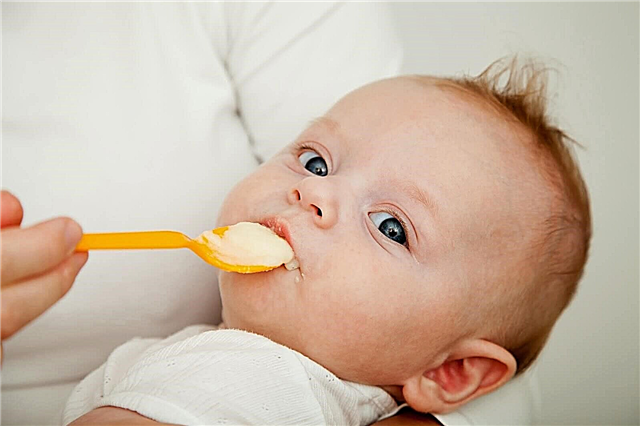Parents very often turn to a specialist about the fact that the child has cloudy urine. These fears may indeed be valid. In most cases, you should not worry, because in the case of a baby, what the mother eats is important.

Kid goes to toilet
Important! A change in the color of urine in an infant may indicate a serious medical condition and require an immediate visit to the doctor.
It is much easier to prevent the development of pathology than to treat it.
The main indicators of urine
Normally, urine in a child transmits light and is colored in a yellow tint (while slightly saturated).
Also, during the analysis of urine, the following indicators are taken into account:
- The level of acid-base balance. Normally, urine pH should range from 5 to 7.
- Density. For a newborn, the value should be between 1002 and 1006 g / l. For babies - up to 1014 grams per liter.
- Proteins. Their content should not exceed 0.02%.
- Sugar. Absent.
- Erythrocytes are no more than a cell within a researcher's vision.
- Leukocytes - a maximum of 3 in the field of view.
Important! Urine for analysis can be taken at home.
Causes of loss of transparency in urine
If the urine of a newborn is cloudy a couple of days after coming into this world, this should not worry the parents. This is the norm, the symptom will disappear by itself. After the introduction of complementary foods, the color of urine may also change, which is caused by a change in diet.

Baby in the toilet
In general, the set of reasons why a child has cloudy urine is very wide:
- Long-term stay in the open air. In this case, the physical properties of the liquid change, bacteria multiply there, and the constituent components decompose. If an adult evaluates clarity outside the morning after the first urination, there is a chance to draw the wrong conclusions.
- Eating certain foods. Plums, figs, sorrel, grapes, legumes spoil the urine color well. If the baby does not care about anything, then most likely the reason lies in the nutritional habits.
- Dehydration (dehydration). In newborns and infants, this rarely happens, since little people get all the necessary liquid with breast milk or formula. If the cloudiness is caused by dehydration, you must immediately restore the water balance, otherwise death is possible. The optimal amount of fluid entering the body is 50 ml per 1 kg of body weight per day. If artificial feeding is used, it is necessary to use such an amount of water during the preparation of the mixture so that the water balance is restored.
- Burns. In this case, most of the products of tissue breakdown are excreted through the kidneys. Therefore, the liquid becomes more cloudy.
- Hypervitaminization. This can provoke allergic reactions and the inability of the liver to perform its functions. One of the main digestive organs simply becomes weak. As a result, the biological fluid darkens and becomes cloudy.
Morning and evening urine
Urine is lighter in the morning than in the evening and closer to night. Therefore, it is believed that it is better to take the analysis immediately after waking up from a night's sleep. During the day, salts accumulate in the urine, which can appear due to excessive consumption of different types of foods.

Urine for analysis
If from time to time the urine of the crumbs becomes opaque, then there is no point in worrying. The main thing is that the rest of the time it retains its color and transparency.
Important! Normally, urine does not have a strong odor, it does not contain mucus, microflora, erythrocytes and leukocytes. One of the most important criteria is the health of the baby. If the baby feels good, gets enough sleep, there is no reason to worry.
Diagnosis of diseases causing turbidity

Normal urine should be clear
If cloudy urine with sediment is found in a child, this may indicate a whole range of various diseases:
- ARI. Simultaneously with the clouding of urine, the child has a fever, a runny nose, a cough, and an inflamed throat may appear.
- Inflammation in the organs of the excretory system. In this case, the amount of blood corpuscles and mucus increases in urine, which causes a change in color and density.
- Diseases of the liver and biliary tract. In this case, the urine becomes dark, resembling beer in color. This is due to the accumulation of the breakdown products of hemoglobin. If the urine becomes white, this may indicate the degeneration of hepatocytes into fat cells, which can cause cirrhosis of the liver.
- Acute appendicitis. Here, in parallel with the clouding of urine, there are cutting pains in the right lower abdomen.
- With diabetes, ketone bodies (such as acetone) accumulate, which affect the color of the urine. You can find out about their presence by the characteristic smell of acetone, as well as using special tests.
- Pyelonephritis is an inflammation of the renal tubules. In this case, in addition to opaque urine, there is also a modification of its shade (towards a yellow-green color). White flakes also appear in it. Pyelonephritis is accompanied by an increase in body temperature and pain in the lower back, including when dealing with a small need.
- Diseases of the blood. One of them is hemolytic anemia, in which red blood cells are destroyed.
- Abnormalities in the structure of the kidneys. Urine can flow back into the ureters and stagnate there. In this case, bacteria multiply, and the number of leukocytes in the damaged renal tubules increases.
- Intoxication and intestinal infections. Here, a large number of red blood cells can enter the urine. As a rule, this reason intersects with impaired liver function, since it is involved in neutralizing toxins. This is especially dangerous for babies up to a year.

Baby photography
Thus, the diagnosis of the causes of changes in urine transparency is quite multifaceted and includes:
- Clinical analysis of urine. The characteristics as well as the components of the sediment are analyzed.
- Samples according to Nechiporenko. Another urine test designed to study its shaped elements.
- Analysis by the method of Zimnitsky to determine the density of urine.
- Biochemical blood test.
- Ultrasound of the genitourinary system.
- Analysis of accompanying symptoms.
Important! Since the set of reasons why cloudy yellow urine appears in a child is very wide, it is better to see a doctor right away or at least undergo a routine examination every month.
Doctor Komarovsky's recommendations
Dr. Komarovsky claims that if the baby's urine is cloudy, but he feels good, and the tests show good results, then you should not worry.
He also says that, in addition to the standard urine analysis, it is necessary to determine the qualitative and quantitative composition of the microflora. If the liquid contains a large number of bacteria, this often speaks of pyelonephritis, urethritis, cystitis. Treatment in this case is carried out with antibiotics. As a rule, in such a situation, less active substance is required, because all drugs are excreted in the urine. The antibiotic will be where it really needs to be.
When treating with antibacterial drugs, it is very important to complete the course of treatment. The baby may feel better in the early days, but symptoms may return if the drug is stopped. Old antibiotics won't help (bacteria will become resistant).
When to see a doctor
If the urine becomes cloudy and this condition persists within a few days, you should consult a specialist. The fact is that many diseases can be latent. It is especially important to consult a doctor if the baby has symptoms of appendicitis, pyelonephritis, intoxication, liver dysfunction. If the baby is dehydrated, this is also an alarm call that requires an ambulance call.



